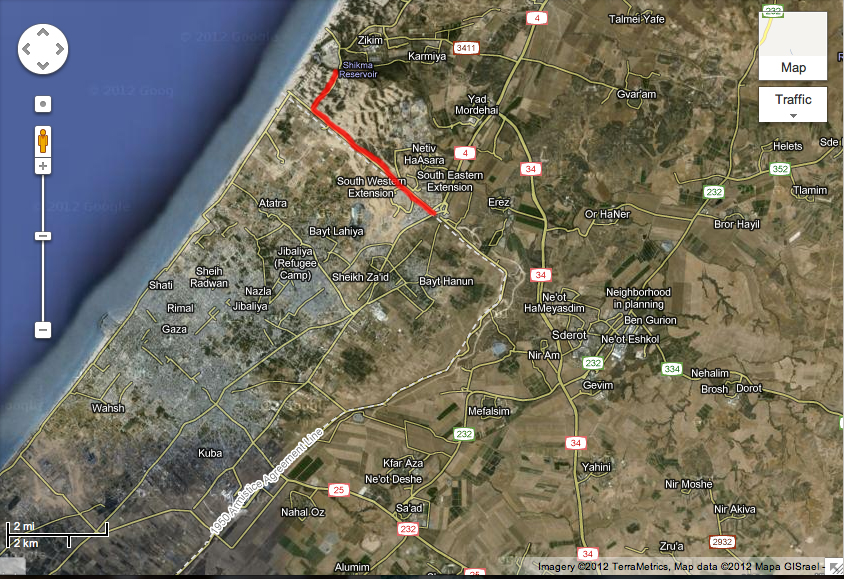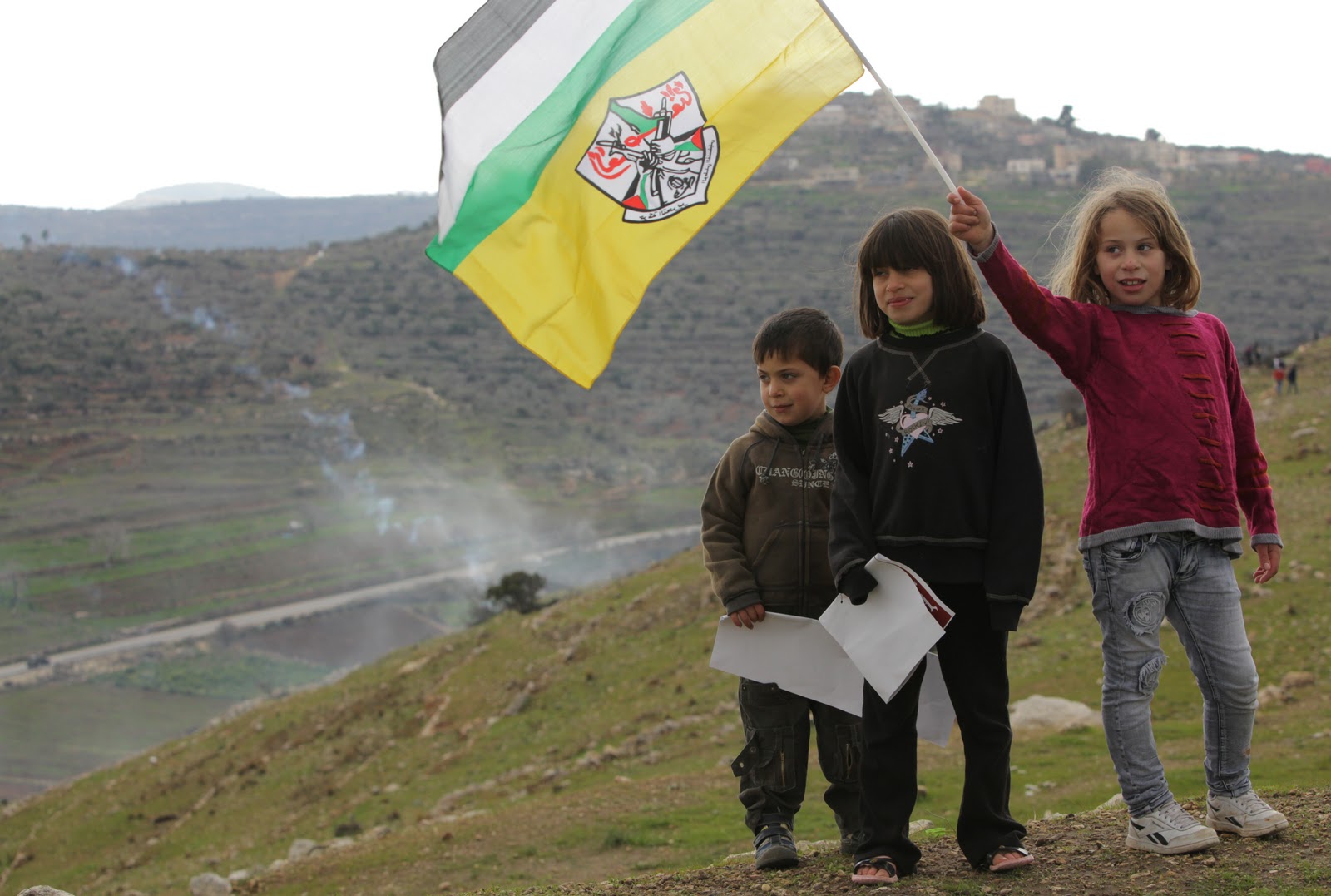In the U.S., when you think of Israel, oftentimes images of explosions, suicide bombings, soldiers armed with M-16's and mass panic may come to mind. This image, courtesy of indoctrination from the media- is why so many people were shocked and confused when I told them of my plans to move here. But it is nothing like actually living here. The only explosions I've seen in Tel Aviv involve heavy nights of drinking, and loud music....mostly
Recently, I was offered the opportunity to, once again, venture outside of the Bubble a.k.a. Tel Aviv and get a little bit closer to the side of Israel that is always highlighted by the international media. First I was offered to join a ride-along with the Israeli Defense Forces (IDF) on the northern border of Gaza. It was a long ride (which in a country the size of New Jersey means about 1.5 hrs) south, to the border. There we met with the officers accompanying us on our tour of 'No Man's Land' and the fence that separates Israel from Gaza.
We were put into armored vehicles in order to brave the borders of Israel/Gaza. The vehicle I was in looked like a safe room, with six inch metal walls and a door that sealed shut so tightly I thought we could be submerged in water and wouldn't leak. There were bowling balls lodged into the walls, meant for your guns. The barrel would fit through the hole and it could be rotated in the wall of the vehicle in order to aim.

As we drove (the red line on the map), it seemed as though we were taking the scenic tour. Out the window were the most pristine, and stunning beaches I have ever seen, with crashing waves and perfectly white sand. All of the sudden, our armored vehicle veered left, up and down a few small dunes, and there we were. A barely obstructed view of Gaza. How surreal it was, to be just on the other side of that fence. The few high rises we could see in the distance hardly belied the reality of what was on the other side. Just behind that wall was a city of half a million, a city that is one of the most densely populated in the world. A city that lives in extreme and widespread poverty.
The calm I experienced at the border is entirely misleading, however. Two days later, and a stones throw from where we were, Israel successfully launched an air-strike on Hamas members who were setting up missiles to launch over the wall into a city of Israeli Civilians.
The next trip was to Nabi Saleh, a West Bank village of about 500 people just north west of Ramallah. I went with a film crew on a Friday to capture some footage of the weekly protests that occur there. The protests takes place in response to a settlement that was built across the main road into Nabi Saleh. Protestors gather at the road of the town and march as a group towards a spring that was previously owned by a villager, but access was blocked to following the building of the Halamesh settlement on the other side of the road.
A few hours before the noon 'call to prayer,' we gathered the home of Nabi Saleh's media spokesperson. She's been the one doing all of the interviews for international press when they come by. There were about 20 of us gathered in her home, some press, some israeli activists, some international activists looking to join the protest. She spoke about Nabi Saleh, Mustafa Tamimi (the protestor who was fatally injured the month before) and the spring that everyone was walking towards. Her words were interesting, but what turned out to be most moving was my trip to the bathroom- no water. No water to flush, no water to wash your hands. No water. These people are marching to a spring. Not just out of symbolism but out of necessity. It used to be a supplementary water supply for the villagers. This was not just a symbol, but a practical necessity. Last summer, typical water shortages forced Israel and the West Bank to run on a more limited supply of water. Israel (who controls the water pipelines) cut off the water supply to Nabi Salih for 40 days!
Realizing that really helped me understand why, for two and a half years straight, every friday, these villagers, and outsiders, come to gather. So this week, I gathered with them, hiding behind my camera as the action played out in front of me. I watched the events occur with ritualistic practice - villagers marched, the Israeli Military stood their ground, children in masks threw stones, the IDF responded with skunk water, children threw more stones, the IDF threw tear gas. There was lots of running, dodging, and heavy breathing. About an hour in, I experienced my first real dose of tear gas. Wow. That stuff hurts. It's like swallowing a 4th of July sparkler. The hairs in your nose feel like they've caught fire, your eyes water so much you can barely see.
It's almost debilitating. I'm not sure if it was the adrenaline or the gas but suddenly I was shaking all over. My friend and a local woman were handing me onions to smell and eat and alcohol swipes to put up my nose and rags drenched in lemon juice - all homemade methods to help alleviate the effects of the gas.
The protestors were slowly pushed further and further from the spring and back into the village. At that point we bolted, cameras and all, towards the car and took off to avoid any possibility of arrest. Slowly, as the adrenaline started to subside, it occurred to me what might be the actual reason for the protest. Fun. That may sound crazy, but in a way it's like extreme sports! And on both sides, IDF and protestors, all of the anxiety and oppression of the week - working at checkpoints or border control, or living in destitute conditions with a beautiful settlement and brightly painted playground across the road from you -all of that builds up into a giant release of tear gas and stones and community and energy and endorphins. An explosion of endorphins! I wanted to do it again. Right away.
But instead, we drove out of the West Bank, and back to Tel Aviv where the adrenaline rush comes from a run on the boardwalk next to the beach, or dancing all night at clubs.
 As we drove (the red line on the map), it seemed as though we were taking the scenic tour. Out the window were the most pristine, and stunning beaches I have ever seen, with crashing waves and perfectly white sand. All of the sudden, our armored vehicle veered left, up and down a few small dunes, and there we were. A barely obstructed view of Gaza. How surreal it was, to be just on the other side of that fence. The few high rises we could see in the distance hardly belied the reality of what was on the other side. Just behind that wall was a city of half a million, a city that is one of the most densely populated in the world. A city that lives in extreme and widespread poverty.
As we drove (the red line on the map), it seemed as though we were taking the scenic tour. Out the window were the most pristine, and stunning beaches I have ever seen, with crashing waves and perfectly white sand. All of the sudden, our armored vehicle veered left, up and down a few small dunes, and there we were. A barely obstructed view of Gaza. How surreal it was, to be just on the other side of that fence. The few high rises we could see in the distance hardly belied the reality of what was on the other side. Just behind that wall was a city of half a million, a city that is one of the most densely populated in the world. A city that lives in extreme and widespread poverty.
